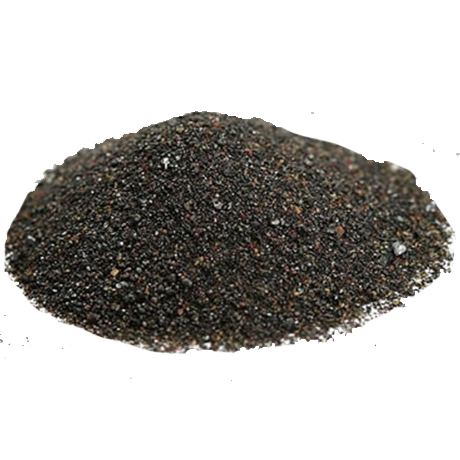Tin Concentrate
Concentrates shipped to the smelter usually contain 70 to 75 percent tin metal. Even in the richest tin fields, the concentration of tin is very low. This means that up to seven or eight tons of ore may have to be mined in order to recover one kilogram of cassiterite. Ores are concentrated by gravity separation methods, including jigs and shaking tables. The concentrate is then collected for further treatment onshore, while the barren material is discharged over the stern of the dredge. Tin concentrates from the alluvial mining areas are relatively free of impurities, although there may be small quantities of related minerals such as wolframite, scheelite, and columbite. The main techniques employed for concentrating tin ores are screening, wet and dry gravity methods and magnetic and electrostatic separation. The amount of treatment needed depends on the grade of ore and type of deposit.
Concentrates shipped to the smelter usually contain 70 to 75 percent tin metal. Even in the richest tin fields, the concentration of tin is very low. This means that up to seven or eight tons of ore may have to be mined in order to recover one kilogram of cassiterite. Ores are concentrated by gravity separation methods, including jigs and shaking tables. The concentrate is then collected for further treatment onshore, while the barren material is discharged over the stern of the dredge. Tin concentrates from the alluvial mining areas are relatively free of impurities, although there may be small quantities of related minerals such as wolframite, scheelite, and columbite. The main techniques employed for concentrating tin ores are screening, wet and dry gravity methods and magnetic and electrostatic separation. The amount of treatment needed depends on the grade of ore and type of deposit.
Properties of Tin Concentrate
| Molecular Weight | 118.69 |
|---|---|
| Appearance | Silver-gray metallic solid |
| Boiling point | 2602 °C |
| Melting point | 232 °C |
| Density | 7.265-7.31 g/cm3(20 °C) |
| Electrical Resistivity | 11.5 x 10-8 Ω·m |
| Electronegativity | 1.96 Paulings |
| Heat of fusion | 7.03 kJ/mol |
| Heat of vaporization | 296.1 kJ/mol |
| Poisson's ratio | 0.36 |
| Specific heat | 0.21 J/g·°C (25 °C) |
| Thermal conductivity | 66.8 W/(m·K) |
| Thermal expansion | 22.0 µm/(m·K) (20 °C) |
| Young's modulus | 50 GPa |
